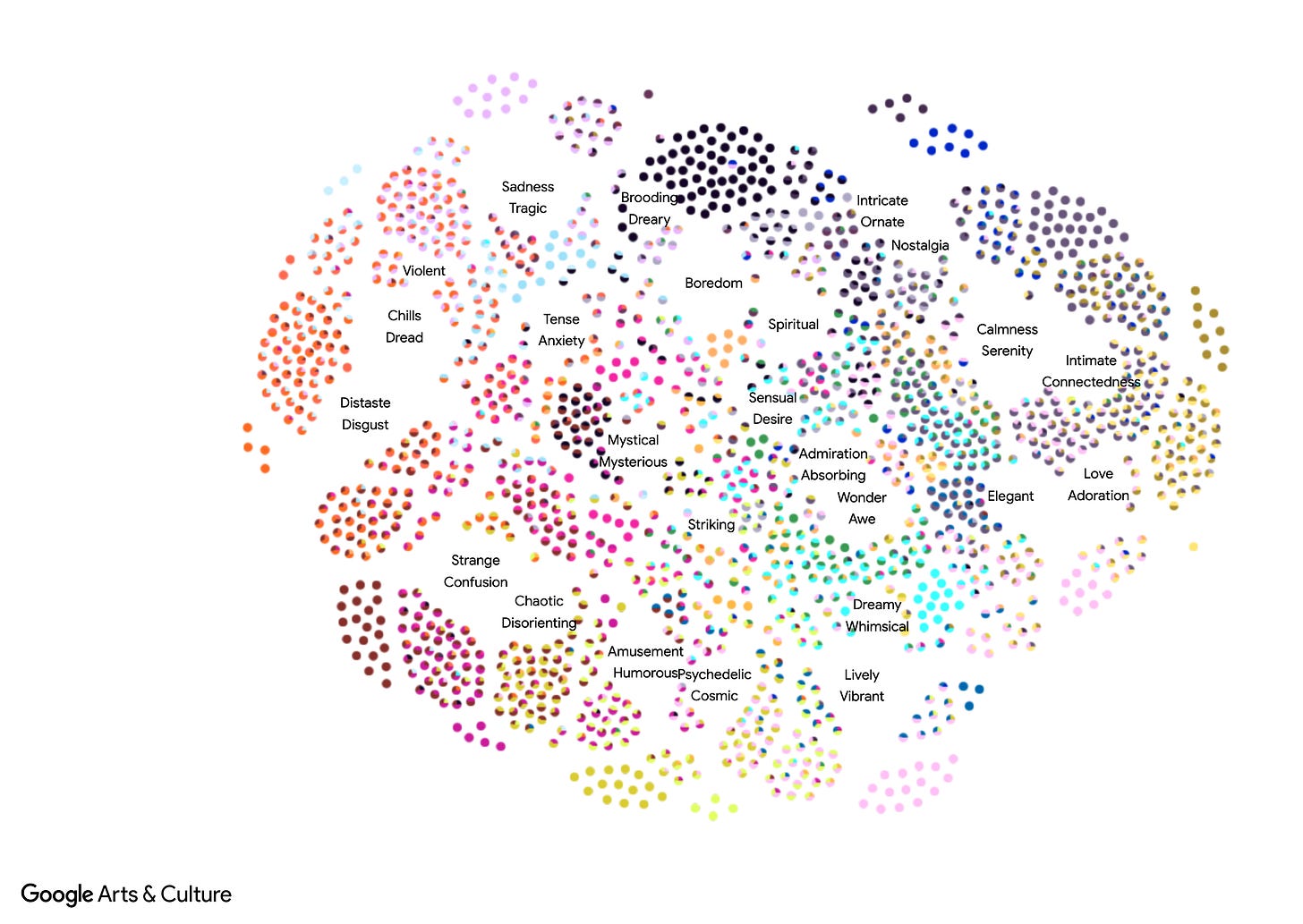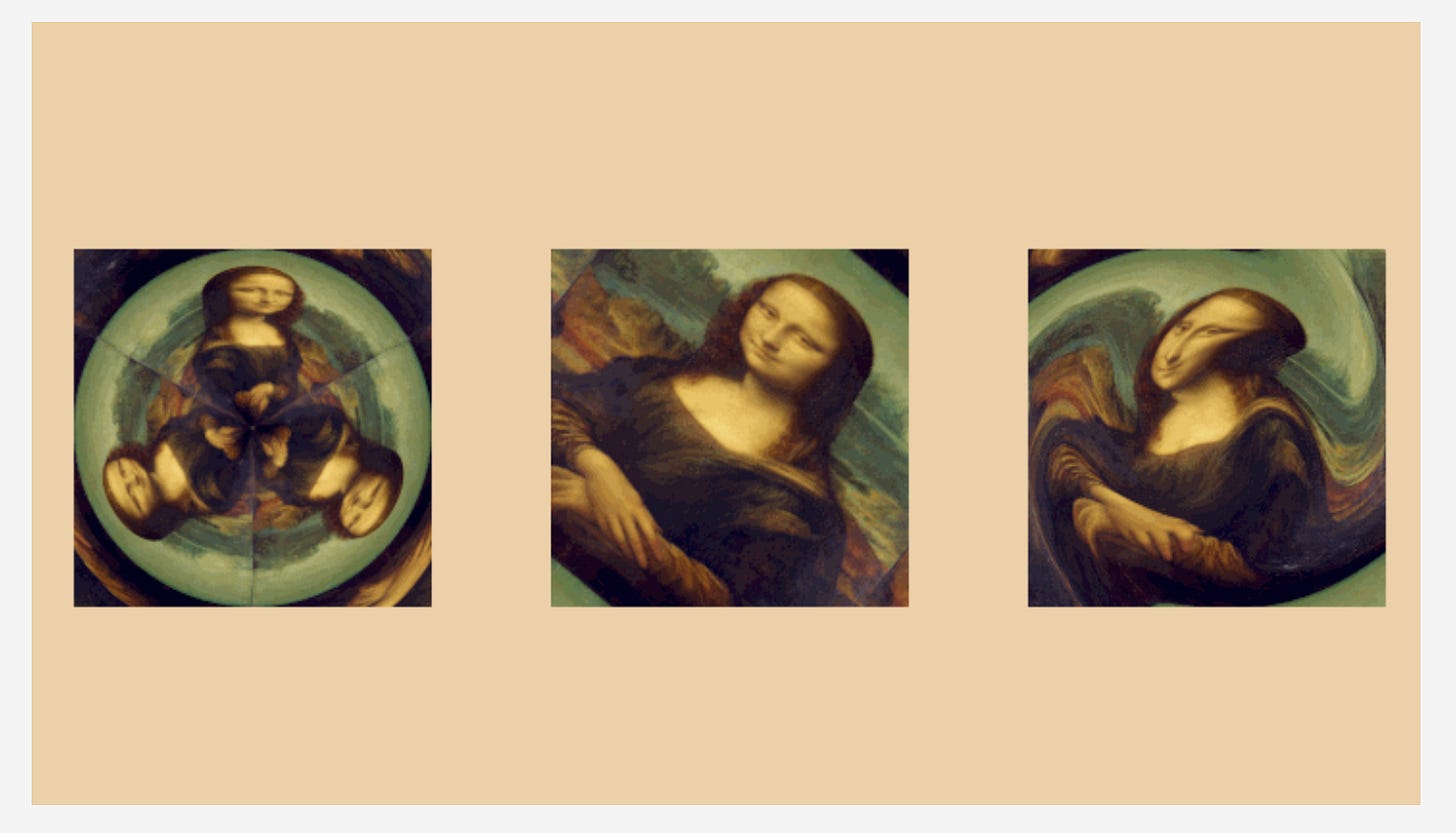Conceptual Art, Fear, and Generative Synthesis
Generative Arts Weekly #031
Website | Instagram | Youtube | Behance | Twitter | BuyMeACoffee
Good Afternoon! I've been reading through the book Art & Fear by David Bayles and Ted Orland. I might share a few passages that I highlighted. I find them to be great nuggets of truth worth contemplating about pursuing art and the insecurities involved.
The function of the overwhelming majority of your artwork is simply to teach you how to make the small fraction of your artwork that soars. One of the basic and difficult lessons every artist must learn is that even the failed pieces are essential
Basically, those who continue to make art are those who have learned how to continue — or more precisely, have learned how to not quit.
Quitting is fundamentally different from stopping. The latter happens all the time. Quitting happens once. Quitting means not starting again — and art is all about starting again.
What separates artists from ex-artists is that those who challenge their fears, continue; those who don’t, quit.
Uncertainty is the essential, inevitable and all-pervasive companion to your desire to make art. And tolerance for uncertainty is the prerequisite to succeeding.
Fears about artmaking fall into two families: fears about yourself, and fears about your reception by others. In a general way, fears about yourself prevent you from doing your best work, while fears about your reception by others prevent you from doing your own work.
Spalter Digital
If you have not yet had the opportunity to browse some of the Spalter libraries, I would highly encourage it! It is one of the largest collections of early and current computer-generated art curated by Michael and Ann Spalter, both deeply involved in generative works. Attached are a few of the images of the artists that have been influential in the early days.
Structure Horizontale - Vera Molnar (1985)
Cubic Limit II - Manfred Mohr (1977)
Walk-through-Raster - Frieder Nake (1967)
Podcasts
Tyler Hobbs - Designing NFT Generative Art w/ a Traditional Touch
Pioneering generative artist Tyler Hobbs talks to Kevin Rose about his history, how he mixes his hand drawings with algorithms, the tools he uses, the rare attributes his collectors are excited about, and the other NFT artists he most respects.
🔖 Articles and Tutorials
Volumetric Light
For a while I have been thinking about how to make some kind of volumetric light effect. There are a lot of resources on things like this, but I have avoided doing any research on this on purpose. Figuring out how something works on my own is an interesting challenge, and it sometimes yields idiosyncratic results and/or interesting mistakes.
Blooms: Phi-Based Strobe Animated Sculptures
This instructable demonstrates and explains blooms, a unique type of sculpture I invented that animates when spun while lit by a strobe light (or captured by a video camera with a very fast shutter speed).
Recode Project
The ReCode Project is a community-driven effort to preserve computer art by translating it into a modern programming language (Processing). Every translated work will be available to the public to learn from, share, and build on
Sound of SPUTNIK-1
The audiovisual consists of one original "audio" file from NASA. It is about 4 seconds long. During the recording of the audiovisual, the audio file loops exactly 15 times, equally to the number of orbits Sputnik-1 made within 24 hours.
Art Emotion Map
Emotions help us respond to the world around us - to make decisions, understand people, avoid danger, and survive. Emotions also help other people understand us. Art can trigger emotions too. Over millennia, humans have depicted a vast spectrum of emotions in art that we can relate to our own experiences, which then trigger feelings within us. Can art therefore help refine our understanding of complex human emotions?
Check the exhibit out here: https://artsexperiments.withgoogle.com/art-emotions-map/
Making a Web Audio Synthesizer
Join me for a beginner-friendly, retro-tinted journey into creative Web Audio in the browser. We’ll tweak some virtual knobs, make some weird sounds, get a beat going, and throw it all together. Help me bring the noise-pop stylings of my formative years full circle, and learn about creative browser APIs, JavaScript data structures, and web audio in the process!
Why are Sol LeWitt’s wall drawings so influential?
Early in his career, Sol LeWitt began to have others help execute his wall drawings. Wall Drawing 16 was first drawn by a draftsman, which helped LeWitt realize his work according to his instructions and diagrams, addressing practical concerns such as the time-consuming nature of the drawings. More significantly, however, this choice articulated LeWitt’s belief that the conception of the idea, rather than its execution, constitutes the artwork.
Shader Tutorial: Polar Coordinates
So far whenever we used coordinates we had a clear grid of 2 or 3 axes in which we could manipulate things and push them around. There were multiple spaces of those like object, world, screen, uv space and maybe more but the base rules were always the same most of the time. That pushing things to the right, pushes them to the right, up is up etc… This is called “cartesian coordinates”.












